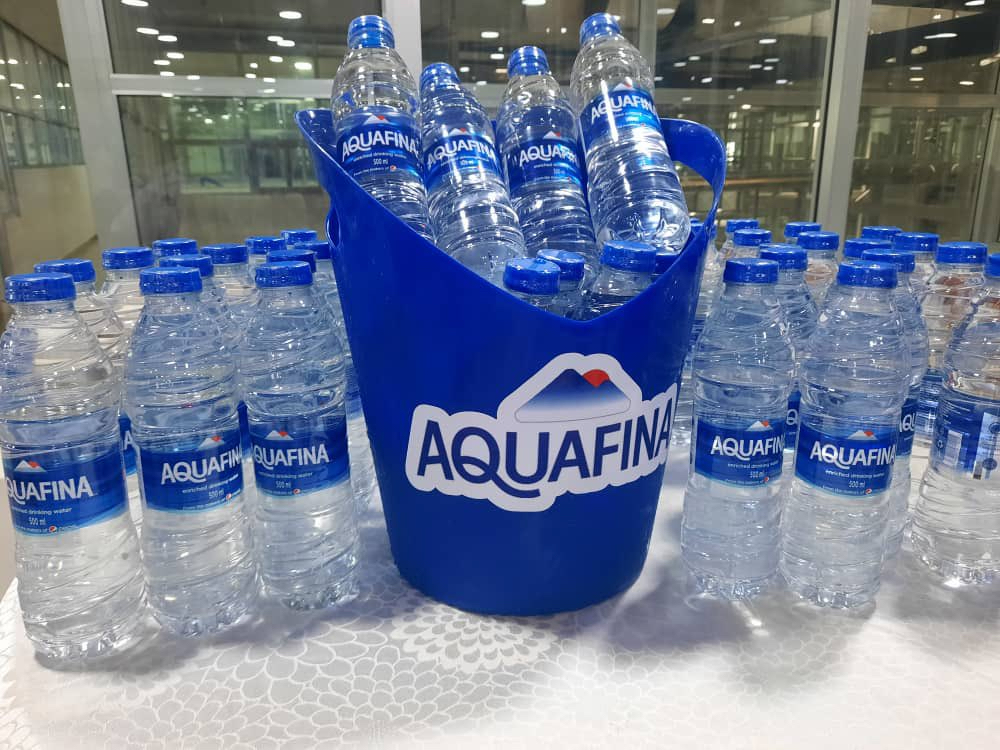Uganda’s bottled drinking water sector has been growing unprecedentedly. There are over 100 registered players, with an estimated total turnover of Shs400 billion.
Rwenzori Mineral Water is the market leader and contributes more than a quarter of Coca-Cola Beverages Uganda’s (CCBU) turnover.
Fresh from winning back, nearly all of its lost market share in the carbonated soft drinks category from CCBU, Crown Beverages Limited, Uganda’s oldest beverage company has now recalibrated its guns with eyes on winning a chunk of the lucrative bottled drinking water category.
This November, CBL introduced a new brand of water- Aquafina.
Aquafina, enriched mineral water is no ordinary water. A brand of PepsiCo, Inc., one of the largest multinational food, snack, and beverage corporations, Aquafina was first launched in the USA in 1994. Over the last two decades, it has expanded into Asia, UAE, and most recently Africa. Uganda is the third country to be allowed by PepsiCo International to bottle the Aquafina brand, after Nigeria and Egypt, according to Paddy Muramiirah, CEO of Crown Beverages Limited.
Aquafina is available in a 500ml pack at a recommended retail price of One Thousand Uganda Shillings (1000 UGX) only, countrywide.
It is the first international water brand in Uganda. Besides Aquafina’s international repute as a PepsiCo product, the water’s other differentiator, according to Muramiirah, lies in its high-quality process of purifying and bottling as well as its great consistent taste.
For starters, Aquafina is natural water, drawn from public water sources (Clarify if from NWSC). It is then purified through a rigorous purification process. This purification process includes reverse osmosis and other filtering and purification methods, that remove minerals such as chlorides, salts and other substances that can affect a water’s taste.
While other brands of bottled water may also have similar purification steps such as reverse osmosis and ozonation, Aquafina also undergoes another process called demineralisation- an extensive purification process that is designed to remove trace compounds such as carbonates, bicarbonates, chlorides, sulfates, phosphates, nitrates, calcium, magnesium, sodium, potassium, iron and manganese. While some of these compounds, like calcium and potassium, are necessary for the body, and most often occur naturally in most water, their minute levels in most bottled or naturally occurring waters have no substantial impact on health.
“Demineralisation removes all these trace compounds and then the vital minerals for the body are reintroduced in sufficient levels for the human body and as per standards approved by bodies, such as the US Food and Drug Administration (FDA). This enrichment process ensures that Aquafina delivers goodness and consistency in taste and quality,” explains Muramiirah.
“At Aquafina, we understand that when you pay for bottled water, you expect consistent purity and great taste. That’s why we have significantly invested in a state-of-the-art production plant, to ensure that every bottle of Aquafina guarantees pure water and perfect taste, consistently every time you open an Aquafina. Anytime, anywhere,” he further says.
Aquafina joins CBL’s raft of other equally popular brands such as Pepsi, Mountain Dew, Mirinda Fruity, Mirinda Orange, Mirinda Pineapple, Mirinda Green Apple, Evervess Tonic, Sting Energy Drink and Nivana Water. Nivan comes in two varieties, namely i.e., still and sparkling.
The company’s Executive Chairman, Dr. Amos Nzeyi, said that CBL wouldn’t discontinue its Nivana Water brand, and would run the two brands concurrently because Aquafina was a premium brand.
“Aquafina is different. There is no water like Aquafina in this market both in quality and taste,” Nzeyi reckons, adding that: “When you drink our Aquafina, you should drink it with one heart- because it has been purified and processed according to PepsiCo’s international standards. The Aquafina you drink here, is not different from the Aquafina in the Americas, Asia or Europe”.
“That Uganda has been considered as the third African country to start bottling Aquafina, is continuing testament to our quality standards that have consistently won Crown Beverage quality awards within the PepsiCo Family,” Nzeyi said.
Just this year, Nzeyi revealed that CBL was the first runners-up for the quality award, globally, at the PepsiCo awards held in Barcelona, Spain.
Aquafina is bottled at the company’s new and state-of-the-art USD76 million (UGX279 billion plant) at Kakungulu, Ssisa, off the Entebbe Expressway. This is CBL’s second plant, after the legacy Nakawa plant, which has undergone several extensions and upgrades.
The plant was financed by Citibank and Stanbic, to the tune of USD50 million. The remaining USD26 million was shareholder re-investment into the business.
